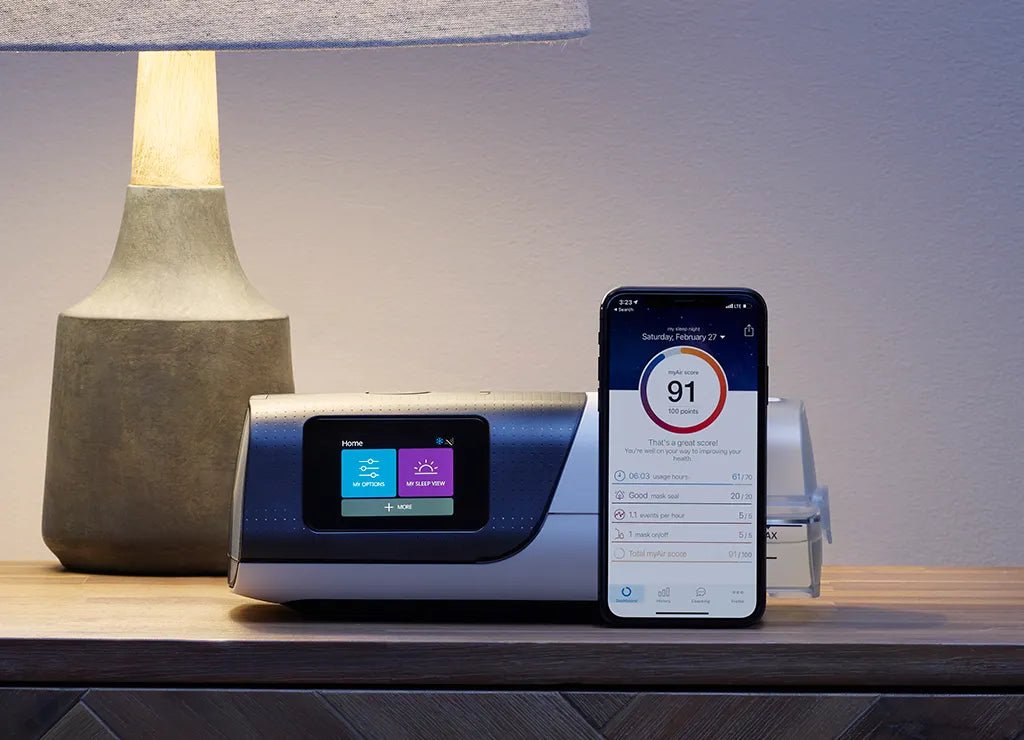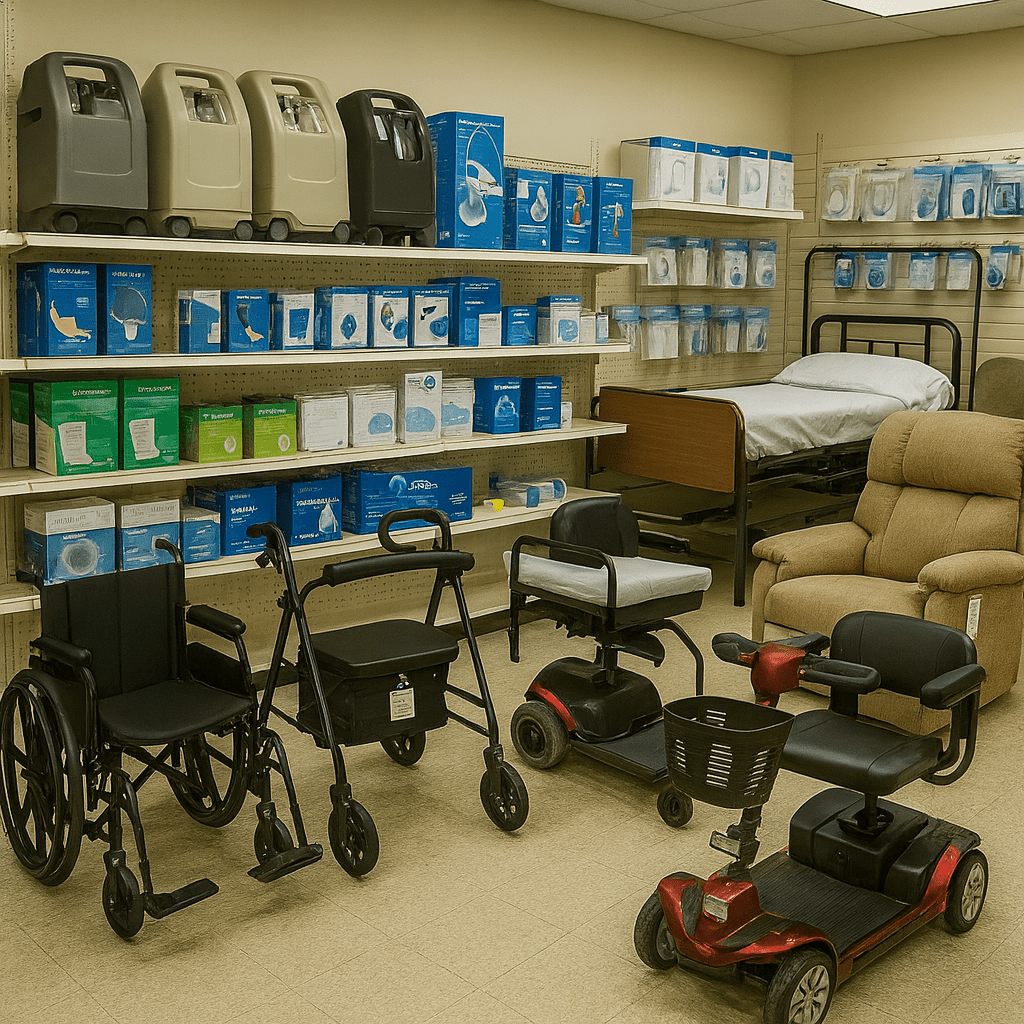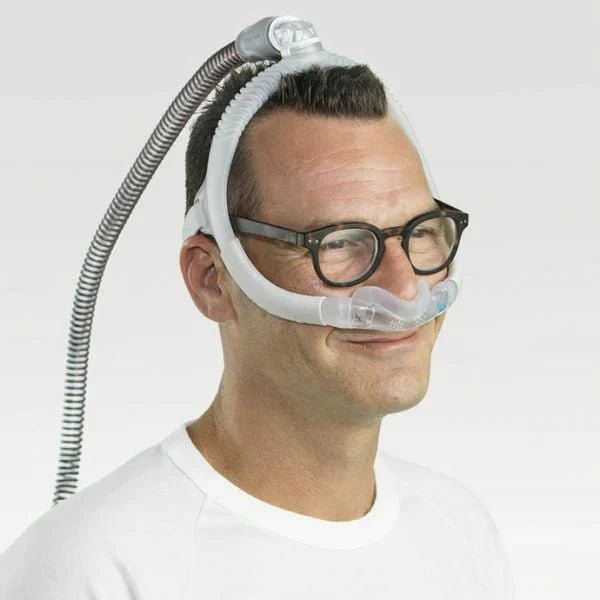Introduction to CPAP Pressure Settings and ResMed Devices
Continuous Positive Airway Pressure (CPAP) therapy is a widely recognized treatment for obstructive sleep apnea (OSA). This condition, characterized by repeated interruptions in breathing during sleep, can lead to severe health issues if left untreated. The effectiveness of CPAP pressure settings is crucial in ensuring successful therapy outcomes. These settings determine the amount of air pressure delivered by the CPAP machine to keep the airway open. Accurate pressure settings are vital as they:- Prevent apneas and hypopneas, thereby improving breathing patterns during sleep.
- Enhance sleep quality by reducing interruptions caused by OSA.
- Alleviate daytime fatigue associated with sleep apnea.
Understanding How CPAP Pressure Settings Work
CPAP Pressure Settings are critical for the effective management of Sleep Apnea, particularly Obstructive Sleep Apnea (OSA). These settings determine the amount of air pressure delivered by the device to keep the airway open during sleep.Definition of CPAP Pressure Settings
- CPAP Pressure Settings refer to the specific level of air pressure that a Continuous Positive Airway Pressure (CPAP) machine delivers to a patient.
- The pressure is measured in centimeters of water (cmH2O), usually ranging from 4 cmH2O to 20 cmH2O.
Link Between Pressure Settings and Opening the Airway in OSA Patients
- For OSA patients, the airway collapses or becomes obstructed during sleep, leading to interrupted breathing.
- Proper CPAP pressure settings help maintain a continuous flow of air, preventing the airway from collapsing.
- Incorrect settings can lead to either discomfort due to high pressure or ineffective treatment due to low pressure.
The Role of ResMed Devices in Delivering Optimal Air Pressure
ResMed is a leading manufacturer of sleep apnea devices, known for their commitment to innovation and quality in CPAP therapy solutions.Why Choose ResMed?
- Advanced Technology: ResMed machines use cutting-edge technology to deliver precise air pressure customized to each individual's needs.
- Reliability: These devices are built to last, offering consistent performance over time and making them a trustworthy option for patients.
- User-Friendly Design: With their intuitive interface and easy-to-use menus, ResMed devices are accessible even for those who are new to CPAP therapy.
Importance of Accurate Pressure Delivery
Having the right air pressure settings is essential for effective CPAP therapy. ResMed machines have incorporated several advanced features to ensure this:- AutoSet Feature: This feature automatically adjusts the pressure throughout the night based on real-time data, ensuring that patients always receive the optimal air pressure.
- Built-in Sensors: By continuously monitoring breathing patterns, these sensors can make necessary adjustments to enhance comfort and effectiveness.
- Exhalation Pressure Relief (EPR): During exhalation, the air pressure is reduced, making it easier for patients to breathe out against the airflow.
Understanding the Range of CPAP Pressure Settings for ResMed Devices
The ResMed CPAP pressure settings offered by The MedEquip Shop typically span from 6 to 14 cmH2O. This wide spectrum allows for customization to meet individual needs, ensuring effective management of obstructive sleep apnea (OSA).Pressure Range
ResMed devices are often set between 6 and 14 cmH2O, with an average setting around 10 cmH2O. This range is broad enough to accommodate various severity levels of OSA.OSA Severity and Pressure Levels
The relationship between OSA severity and required pressure isn't always linear. While severe cases might require higher pressures, each patient’s anatomy and condition are unique. ResMed's guidelines emphasize personalized settings determined by healthcare providers for optimal results. Example: A patient with mild OSA may find relief at a lower pressure like 6 cmH2O, whereas someone with more severe symptoms might need closer to 14 cmH2O.Key Points to Remember:
- Customizable Settings: The flexibility in CPAP pressure settings ensures therapy can be tailored, addressing both comfort and effectiveness.
- Professional Involvement: Adjustments should always be made under professional guidance to avoid risks associated with improper settings.
The Importance of Healthcare Involvement in Adjusting CPAP Pressure
Accurate CPAP pressure adjustment is crucial for effective sleep apnea treatment. When it comes to adjusting the pressure settings, it's best to rely on the expertise of healthcare professionals who can tailor them specifically to your needs.Why You Should Seek Professional Help
Here are some reasons why it's beneficial to involve healthcare providers in adjusting your CPAP pressure:1. Customized Settings
Healthcare providers take into account various factors, such as your weight, anatomy, and the severity of your obstructive sleep apnea (OSA), to determine the most accurate pressure levels for you. This personalized approach ensures that you're receiving optimal treatment.2. Monitoring and Adjustments
Regular consultations with healthcare professionals allow them to track your progress with the therapy and make any necessary adjustments along the way. By closely monitoring how well the CPAP treatment is working for you, they can ensure its continued effectiveness.3. Utilization of Advanced Tools
Healthcare providers have access to advanced diagnostic tools and data from devices like ResMed, which helps them assess your therapy's effectiveness. By analyzing this information, they can identify if any changes or modifications are required for better results.The Dangers of Self-Adjustment
While it may be tempting to tweak the CPAP pressure settings on your own, there are potential risks associated with doing so without professional guidance:- Ineffective Therapy: Making incorrect adjustments can result in inadequate pressure levels that fail to keep your airway open during sleep. This means that apneas (complete pauses in breathing) and hypopneas (partial blockages of airflow) may still occur, leading to disrupted sleep and ongoing health issues.
- Discomfort and Side Effects: Increasing the pressure too much can cause discomfort or lead to side effects such as nasal congestion or bloating. On the other hand, decreasing it excessively may not provide sufficient relief for your sleep apnea symptoms.
- Aggravation of Existing Health Conditions: Without proper knowledge about how CPAP therapy works and its potential impact on other medical conditions, you could unintentionally worsen any pre-existing health issues you have.
Overview of the ResMed AirSense 10 CPAP Machine
The ResMed AirSense 10 CPAP Machine is renowned for its user-friendly design and advanced features. Its top benefits include:- AutoSet Technology: This feature automatically adjusts the pressure during the night for optimal therapy and comfort.
- Expiratory Pressure Relief (EPR): The machine decreases the pressure when you breathe out, making it easier and more natural.
- HumidAir Integrated Humidification: It provides consistent moisture to prevent dryness and irritation, ensuring a more comfortable experience.
- Easy-Breathe Motor: The machine operates quietly, creating a peaceful sleeping environment.
Built-in Sensors for Advanced Sleep Tracking and Therapy Monitoring
The ResMed AirSense 10 comes equipped with advanced sensors that greatly improve therapy management:- SmartStart Function: This function initiates the therapy as soon as you breathe into the mask, eliminating the need for manual adjustments.
- Advanced Event Detection: The machine keeps track of various factors such as apnea, hypopnea, and central sleep apnea events. This provides detailed information about your sleep health, assisting in better therapy customization.
- Wireless Connectivity: The device allows healthcare providers to remotely monitor your progress. This ensures timely support whenever necessary, leading to enhanced therapy outcomes.
Enhancing Your CPAP Therapy
If you're looking to enhance your CPAP therapy further, consider exploring additional equipment options such as full-face CPAP masks or even stationary oxygen concentrators available at The MedEquip Shop. These can provide added benefits in terms of comfort and convenience.The Role of Ongoing Care: Consultations, Follow-ups, and Data Analysis
Regular communication with a sleep physician is essential throughout the CPAP therapy journey. This ongoing care ensures that the treatment remains effective and adjusts to the patient's evolving needs.Importance of Regular Consultations
1. Assessment and Adjustment
Sleep physicians can evaluate the patient's response to CPAP therapy, making necessary adjustments to pressure settings.2. Addressing Issues
Any discomfort or side effects from the therapy can be promptly addressed, improving overall compliance and effectiveness.Utilizing Therapy Data
Data from CPAP machines, especially advanced models like ResMed's AirSense 10, play a crucial role in evaluating the effectiveness of pressure settings:- Monitoring Progress: Built-in sensors track sleep patterns and breathing metrics, providing valuable insights.
- Informed Adjustments: Physicians use this data to fine-tune pressure settings, ensuring optimal airway support.
Exploring Alternative Options: APAP Machines and Personalized Therapy
Understanding the Technology Behind APAP Devices
APAP (Automatic Positive Airway Pressure) machines are an advanced alternative to traditional CPAP therapy. Unlike CPAP machines that deliver a fixed air pressure, APAP devices automatically adjust the pressure throughout the night. This technology offers several benefits:- Variable Pressure Support: APAP machines continuously monitor your breathing and adjust the pressure to meet your needs in real-time.
- Enhanced Comfort: By providing only the necessary amount of pressure, APAP devices can enhance comfort and improve adherence to therapy.
Suitability of APAP for Individuals with Fluctuating Pressure Needs
Not everyone can tolerate fixed pressures set by standard CPAP devices. For those who experience fluctuating pressure needs or have difficulty adapting to constant pressure levels, APAP machines may be particularly beneficial:- Adaptability: Ideal for individuals whose pressure requirements change due to varying factors such as sleeping position or stages of sleep.
- Personalized Therapy: Suited for patients who struggle with consistent settings, ensuring they receive optimal therapy tailored to their specific needs.
Conclusion
The CPAP pressure settings play a critical role in optimizing sleep apnea therapy. Accurate pressure levels ensure that the airway remains open, minimizing apneas and hypopneas, which can significantly improve sleep quality and overall health. ResMed devices stand out as leading solutions in this field due to their advanced technology and user-friendly features.- Professional Guidance: It is essential to seek professional guidance for the initial setup of CPAP devices. Healthcare providers can accurately determine the right pressure settings tailored to individual needs.
- Avoid Self-Adjustment: Self-adjustment of CPAP pressure settings can lead to ineffective therapy or discomfort. Consulting with a sleep physician ensures that any necessary changes are made safely and effectively.









